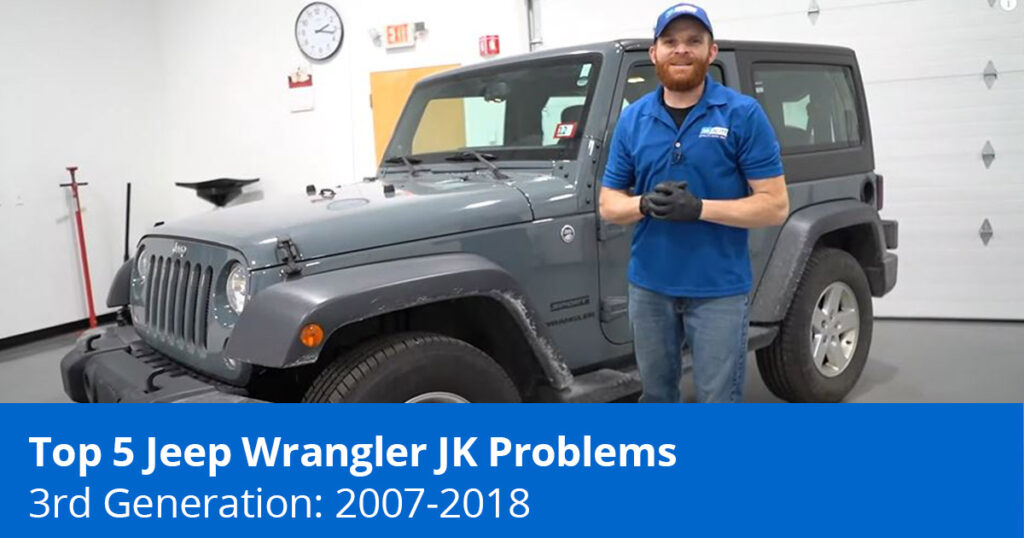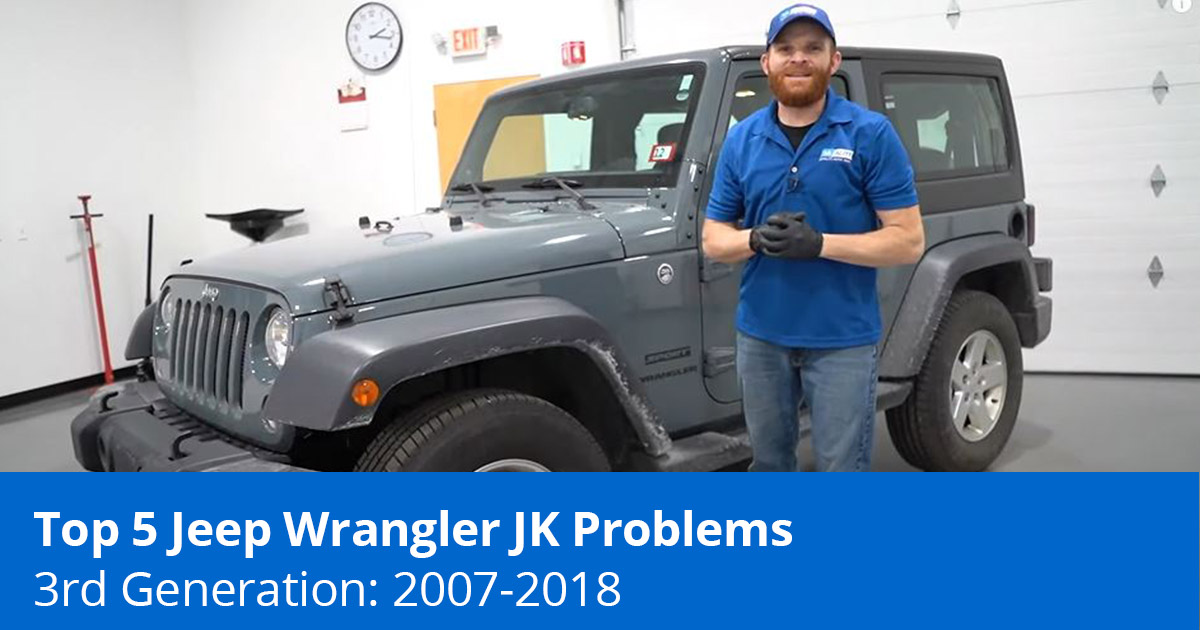
In today’s post, we take a look at some of the top 5 Jeep Wrangler problems that most owners are likely to come across. These issues mainly concern the 3rd generation version that covers the 2007 to 2018 model years. We explain what causes some of these problems and how you can go about fixing them.
How to Diagnose and Fix 3rd Generation Jeep Wrangler Problems (2007 to 2018)
1. Water on Floorboards
Symptoms of Water Leaking onto the Floorboards
We’ll start with the most common Jeep Wrangler problem that a lot of drivers have seen. It involves the accumulation of water on the vehicle’s floorboards when it rains.
The water tends to get into the cabin through the A-pillars. These are supposed to have a rubber seal that keeps moisture and water from getting through the doors and windows. Unfortunately, the seals do not do their job all the time.
The water seeps through and flows down to the floorboards.
How to Fix Water on the Floorboards
The best solution for this is to replace your A-pillar seals with a stronger and improved gasket. Remember to also remove all the water from the floorboards to prevent them from rotting.
2. 4WD Unit Leaks
Symptoms of 4WD Unit Leaks
The most common 4WD unit leaks in the 3rd generation Jeep Wrangler take place at the front differential, rear differential, and transfer case. At the front differential, the leakage tends to take place just near the CV joints where there’s no seal.
The seal is located right where the drive axles connect to the differential. If you find a leak near your CV joints, it means that debris found its way inside the axles and ruined the seal. This is one of the more complex Jeep Wrangler problems to tackle.
How to Fix Unit Leaks on the 3rd Gen Jeep Wrangler
You’ll need to take your front differential apart and separate it from the drive axles to replace the damaged seal. Remember to also take a look at the differential as well as a damaged pan gasket can also cause leaks. If you notice any fluid dripping down there, you’ll have to replace the pinion seal. It’s found right where the drive shaft connects to the differential.
For the rear differential, the same problem applies. The only exception is that the axle seals are located closer to the wheels. If those start to leak, gear oil may find its way to your brakes. This may cause them to lock up.
How to Fix Transfer Case Leaks
The transfer case on a Jeep Wrangler requires a bit more attention when it comes to fixing leaks. This is because it has several seals on it. You can start by taking a look at the output shaft seals found in between your driveshaft and transfer case. These tend to go bad when exposed to debris encountered during off-roading.
You may find a leak on either side of the transfer case or right in the middle where the case seal is located. You’ll mostly see fluid dripping from your skid plate as an indication. Other symptoms that you may notice include hearing noises coming from your front differential, rear differential, or transfer case. You’ll need to first locate the source of the problem then replace the corresponding seal.

3. Ignition Cylinder
Symptoms of a Bad Ignition Cylinder
The ignition cylinder is the part that you insert your ignition key to start your Jeep. Unfortunately, it tends to go bad due to dirt and debris. The dirt finds its way into the cylinder when you’re driving mostly with the top and doors off. It causes a short circuit and prevents the cylinder from doing its job.
How to Fix a Bad Ignition Cylinder
Jeep released an updated version of the ignition cylinder that helps to keep moisture and debris out. It lasts as long as your Jeep and you’ll need to get it as a replacement.
4. Starting Issues
Symptoms of No Start Problems on the 3rd Gen Jeep Wrangler
Another common Jeep Wrangler problem is experiencing a no-start situation every time you turn your ignition key. This is caused by a failing wireless control module (WCM) that fails to detect the chip located inside the key.
How to Fix No Start Problems
As a result, the vehicle’s theft system will always think there’s an intruder trying to start the vehicle using a foreign object. This stops the car from starting every single time you put the key in. The best solution here is to replace the wireless control module. You’ll need to program the new unit so that it works with your ignition key.
5. Exhaust Manifold
Symptoms of a Bad Exhaust Manifold
Our final Jeep Wrangler problem on this list is the exhaust manifold. After burning air and fuel, the internal combustion engine emits exhaust gases through the exhaust manifold which then directs them out via the tailpipe.
Unfortunately, these manifolds tend to crack. This could be due to a metal defect caused by an air bubble that got stuck inside the casting. It could also be caused by exposure to splashes of water while off-roading. The rapid contraction that takes place when it’s hot causes the manifold to crack.
How to Fix a Bad Exhaust Manifold
The best fix for this is to replace the exhaust manifold altogether. You’ll need to pay attention to the bolts and screws that hold it to the engine. They tend to break due to increased tension caused by numerous duty cycles.
3rd Generation Jeep Wrangler Model Years
- 2007 Jeep Wrangler
- 2008 Jeep Wrangler
- 2009 Jeep Wrangler
- 2010 Jeep Wrangler
- 2011 Jeep Wrangler
- 2012 Jeep Wrangler
- 2013 Jeep Wrangler
- 2014 Jeep Wrangler
- 2015 Jeep Wrangler
- 2016 Jeep Wrangler
- 2017 Jeep Wrangler
- 2018 Jeep Wrangler
Related Content
Shop 3rd Gen Jeep Wrangler Parts
- Engine Parts
- Steering & Suspension
- Headlights
- Brakes & Wheel Hubs
- Exterior Parts & Mirrors
- Shop All Jeep Wrangler Parts

